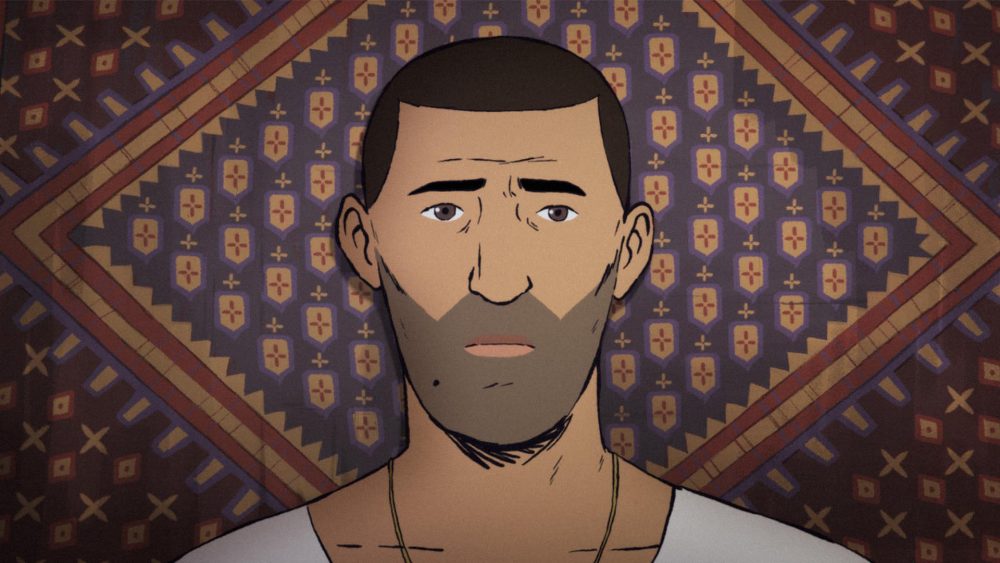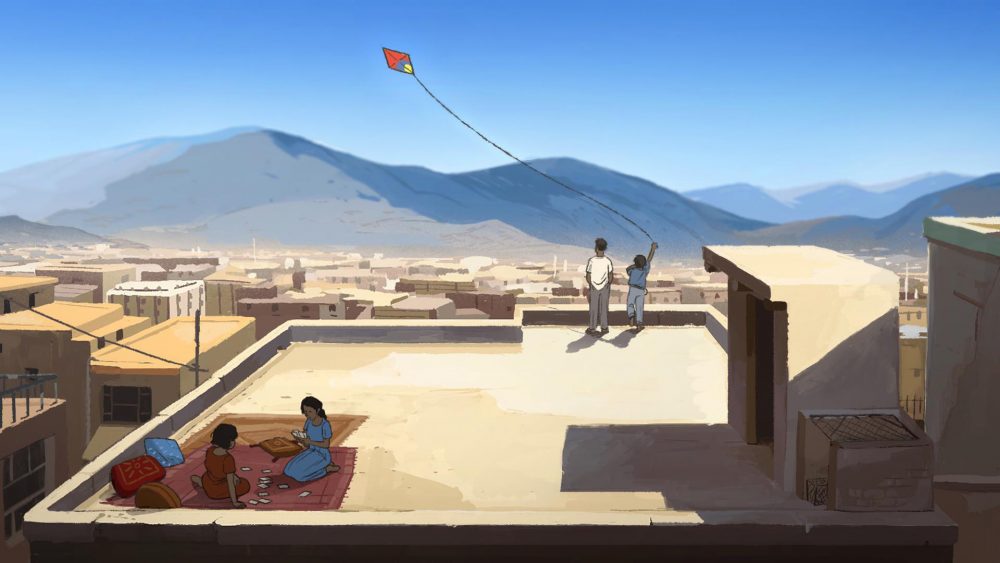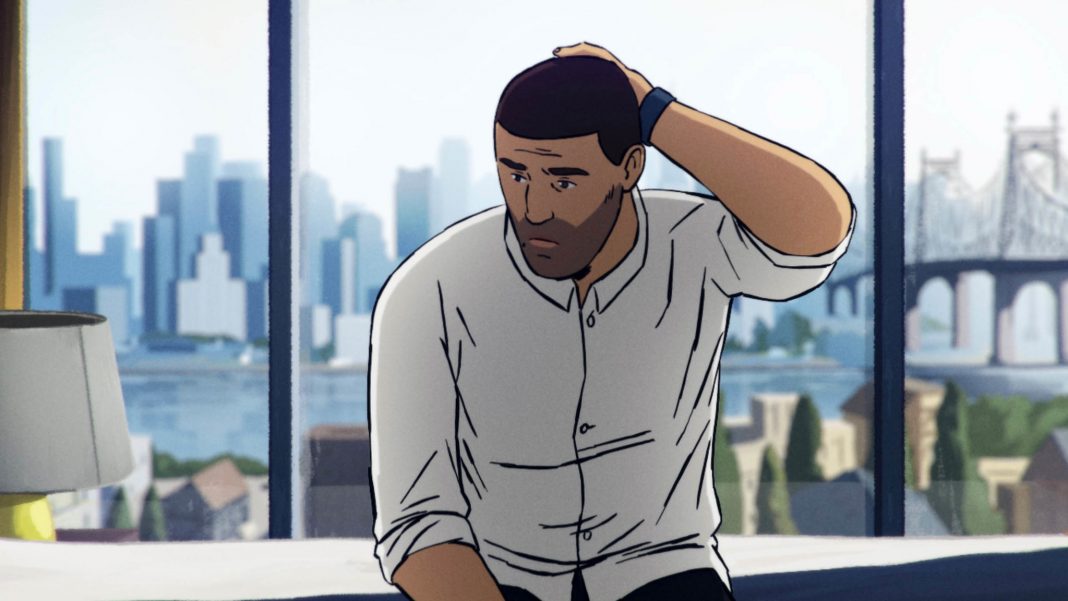In this honest and astonishing documentary about one man’s life, Flee sees director Jonas Poher Rasmussen create a rich and unique visual story about his childhood friend, Amin Nawabi’s (a pseudonym given to protect the subject), life as a refugee. Flee combines archival footage, 80s pop music, and luscious animation together into an intricate story of Amin’s past. From his family’s escape from Afghanistan to their life in post-communist Russia to his eventual arrival in Denmark, Flee lays out one refugee’s story that is sure to astound anyone unfamiliar with what many refugees fleeing their home countries must experience in order to survive.
After premiering at Sundance this year, the documentary won the World Cinema Grand Jury Prize for Documentaries. Riz Ahmed and Nikolaj Coster-Waldau have come on as executive producers. The actors will voice Amin and Rasmussen respectively in the upcoming English-language version of the doc. The film is scheduled to be distributed by Participant and NEON in North America.
The documentary starts simple. An adult Amin is about to get married to his partner Kasper. He meets with his friend, the director Rasmussen, in order to tell his true story. The two met when they were in high school, with Amin having just arrived in Denmark. The initial account Amin gives of his life, the official one is already a tragic one. He arrived at the age of 11 to Denmark from Afghanistan after losing his entire family to the mujahideen seizing power. But as Amin’s time with Rasmussen unfolds, their interview-cum-therapy reveals another story.

Following his father’s capture by the Taliban in Kabul, he escapes to the only country willing to give him a tourist visa, Russia. Except, the Soviet Union has just fallen and Russia is now a dangerous place, rampant with corruption, specifically amongst the police. There, we meet a new figure, a much older brother from Sweden, who escaped Afghanistan many years prior to avoid being drafted as a soldier. Trapped in a small apartment in Russia, with the surrounding police having identified him as a non-citizen, he must attempt to get to Sweden. But the only way is through traffickers and with the corrupt police taking his money, it takes an agonizingly long time for his brother in Sweden to send over his paychecks for him to finally find a trafficker.
What follows is a harrowing story of an ill-fated journey in a ship across the icy northern sea that turns a hopeful escape to a return to land. He’s then transported to a dismal refugee facility in Estonia, one that is fenced in barbed wire with conditions so inhumane it garnered the attention of journalists. Finally, after another grueling period of time stockpiling money, he is transported by a more expensive trafficker to Copenhagen. But even arriving safely in Denmark, Amin still faces uncertainty. Flee truly magnifies an understanding of the loss of trust experienced by a refugee. Amin and his family are surrounded by people who are willing to take advantage of their vulnerability, abuse them, threaten them, and then rob them of whatever paltry money they have struggled to hold.
The disgusting abuse of power from the Russian police is compounded by the power held in the hands of the traffickers who demand a near pound of flesh before smuggling people across the borders. The loss of humanity refugees face, especially from the less expensive traffickers, is painted out clearly Amin’s first attempt to escape to Sweden on a ship. Maximizing profit over safety, people are jammed into small spaces, forced to endure long journeys crammed into this prison. Similarly, another story in the film tells of refugees being packed into a freight shipping container that depicts the same nightmarish inhumane treatment of people. Having finally arrived in Denmark, it is clear why Amin would obey the direct orders of the trafficker to shed his former identity and adopt a new one; the necessity for survival is paramount.

Interlaced in Amin’s narration is the animation of his memories that breathe life into the recollection in an honest and empathetic way. Despite the grimness of the past, Amin’s life is not without warmth and happiness. The animation, brought to life by multiple European animation studios, dives into Amin’s imagination and dreams while also showing us personal vignettes in a way that live-action could never duplicate. In one flashback from his childhood in Kabul, Amin talks about having always felt “different,” admitting to a crush on Jean-Claude Van Damme, and played out in an amusing animation between a young Amin staring up at the Bloodsport poster in his bedroom.
His love life is complicated. We know he is happily engaged to Kasper, and it isn’t his identity as a gay man that he struggles with now. In fact, there is an emotionally cathartic memory where we learn about how Amin was accepted by his family members after coming out, and it is so immensely relieving and full of love that it as a viewer, I basically dissolved into tears. Amin suffers from the same fear of trust that was developed from his time in flux. This fear of discovery permeated his personal relationships, he never knew who he could tell his true story to. “Even when you’re in a safe place, you’re on your guard,” he says.
Over the years, he has grown and as he prepares to marry Kasper, the revelation of his past feels like the final shackles that Amin can remove to enter this new stage in his life. Flee is a story about regaining love, trust, and finding a measure of freedom from the traumas of the past. Fantastically directed, this gut-wrenching story is told in a unique and visually stirring way that makes it an essential watch for all.
This film review was based on the premiere at Sundance Film Festival 2021. Photo Courtesy of Sundance Institute.








